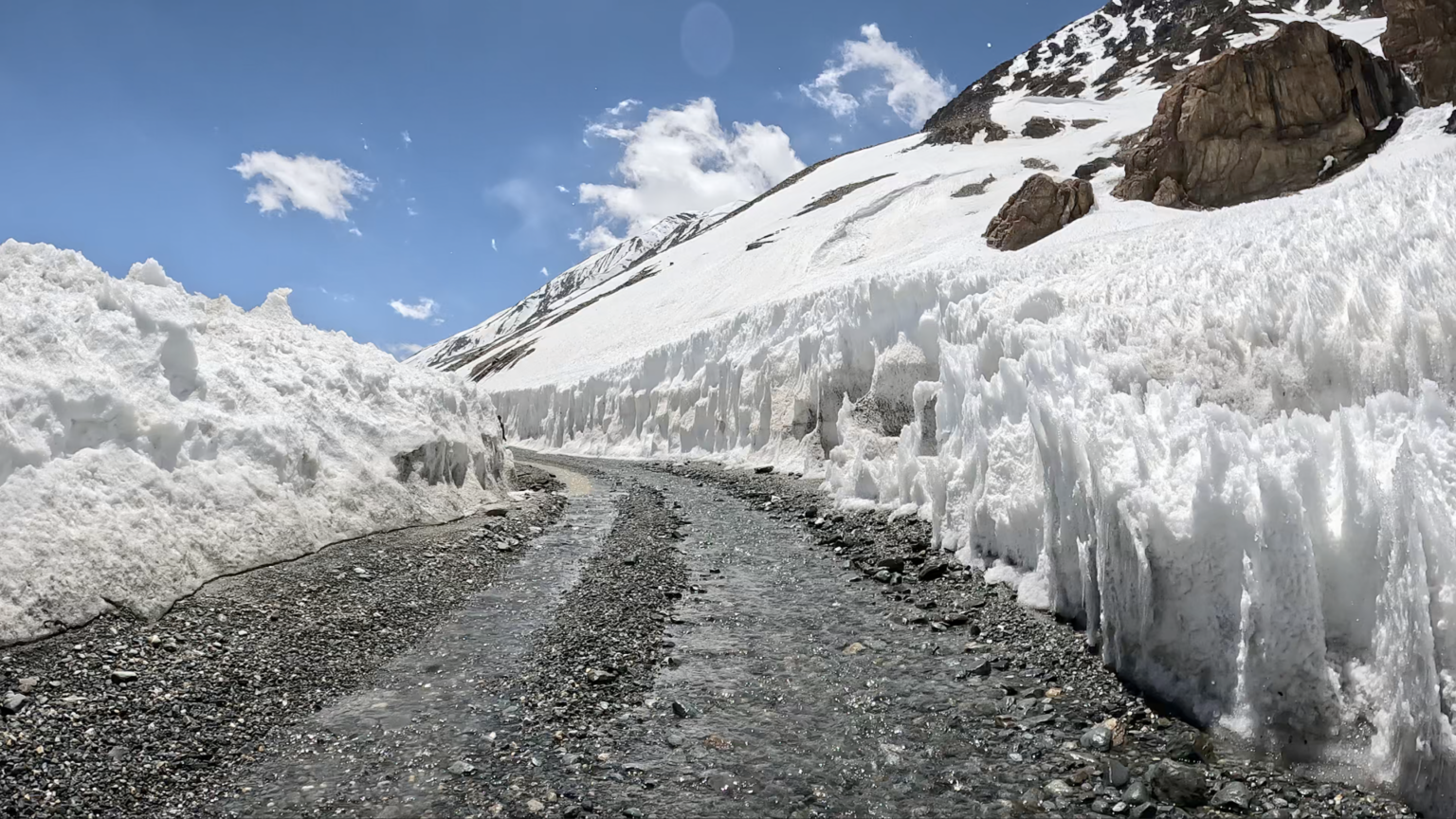Are you planning a trip to the mesmerizing Himalayas in July? From Leh and Ladakh to the Spiti Valley, the conditions and experiences can differ greatly. In this blog post, I will guide you through the latest updates on weather, road conditions, essential tips for your journey, and more.
Traveling to the Himalayas can be one of the most rejuvenating experiences, but the weather and road conditions play a significant role in planning your itinerary. Today, I’ll provide the latest updates for July regarding the weather in Northern India, road conditions for various highways, and essential advice for safety. Whether you’re an adventurer seeking thrills or a serene soul yearning for tranquility, this post is tailored for you.
Understanding July Weather in the Himalayas
July marks the peak of summer in Northern India, particularly in the lower hill stations, including Shimla and Manali. During the first week of July, the weather predictions indicate pleasant conditions, albeit with some expectations of rain. You can indeed enjoy comfortable temperatures during the daytime; however, as the sun comes out, the temperature can rise significantly.
As you ascend to higher altitudes, such as Lahaul Valley, Spiti Valley, or Ladakh, the weather tends to be more unpredictable. Expect warm daytime temperatures, but cooler conditions will prevail in shaded areas. For example, places like Leh have a wonderfully diverse climate with pleasant mornings and relatively warm afternoons. However, do not be surprised if you find yourself pulling on an extra layer after sundown because the evenings can cool down considerably to nearly freezing temperatures at times.
An afternoon thunderstorm is quite common during July in the more lush lower regions. Such storms can lead to quick weather changes, so always be prepared for sudden drops in temperature or unexpected rainfall. Basic weather apps might not always provide the localized insights needed in these rugged terrains, so I suggest connecting with local residents or travel guides who have their fingers on the pulse of the weather patterns.
Clothing Essentials for Your Trip
When packing for your trip in July, it’s important to consider varying temperature ranges. While it can get warm in lower regions, the temperatures will drop as you elevate into the higher ranges of the Himalayas. A good item list would include:
- Your favorite cotton t-shirts and long-sleeved shirts for daytime wear, allowing ample air circulation and comfort.
- A light fleece jacket for chilly evenings and cooler mountain areas, which can be snug enough to keep the biting winds at bay.
- A windbreaker to protect against gusts of wind, especially in higher elevations, ensuring that late-night star-gazing remains a joy rather than a shivering experience.
- Comfortable and breathable pants for ease of movement on long treks, with a pair of warmer pants for potential cold spells.
- Waterproof footwear since you might encounter muddy roads due to possible rain. Investing in hiking boots with good ankle support will serve you well not just for wet conditions, but also on rugged terrain.
Accessories play a key role as well. A sunhat or a scarf can protect you from the sun, while UV-protective sunglasses are vital as UV rays intensify at higher altitudes. Don’t forget to pack a pair of thermals for harsher conditions, especially if your journey takes you towards the northernmost paths or camping in the open terrains. Overall, layering is key—having multiple lightweight layers allows you to adapt to changing conditions comfortably. Knowing when to add or shed a layer can make a significant difference in your adventure.
Current Road Conditions and Travel Alerts
The current road conditions in the region vary. Most roads leading to Ladakh, Spiti Valley, and similar routes are currently open for travelers. However, road conditions can change rapidly due to rainfall or landslides. For instance, the route to Chandrataal might encounter closures if water levels rise or landslides occur, especially after heavy rainfall. Planning your route ahead of time and being aware of alternate paths can save your trip if faced with unexpected closures.
When navigating roads, always start your journey early; this way, you will encounter lesser water flow at foot crossings in the mornings compared to the afternoons, when the snowmelt increases water levels. Pay attention to travel advisories and check local travel agencies or forums for the latest updates regarding road conditions. Staying tuned into local updates through platforms like WhatsApp groups or Facebook communities dedicated to Himalayan travel can provide invaluable real-time information.
As a best practice, always travel with a local SIM card to ensure continuous access to navigation tools and the internet in remote areas, where connectivity can potentially be limited. Additionally, download offline maps such as Google Maps or Maps.me that can help guide your path even when signals are weak!
Traveling in Lower Regions Vs. Higher Passes
Lower regions like Shimla and Manali are currently experiencing some rains, whereas the upper Himalayan regions such as Ladakh are seeing intermittent overcast conditions. As July progresses, the possibilities of travel interruptions increase due to scheduled pre-monsoon showers that could lead to flash floods or landslides, particularly in fragile regions like Kinnaur Valley and Himachal Pradesh’s lower hills. Being proactive is essential—obtain real-time updates on weather forecasts and be willing to adjust your plans if necessary.
In contrast, upper hills or post-monsoon regions may present relatively clearer weather, but it’s vital to stay updated on forecasts. Routes leading to iconic locations, such as Pangong Lake or Nubra Valley, can be stunningly clear one day and quickly become hazardous the next. It often helps to hire a local guide who knows the landscape well and can navigate unexpected weather changes. This can be more than a matter of convenience; a knowledgeable local can lead you to hidden gems and help you experience the place from their unique perspective.
When traveling through these areas, make sure your vehicle is in good condition. Take an emergency kit that includes water, food supplies, a flashlight, and basic first-aid supplies, as well as tools for tire repair or minor vehicle issues. Road conditions can be unpredictable, and it’s always better to be prepared for any scenario than to find yourself stranded.
Latest Updates visiting Galwan Valley
This month, I’ve received some fresh insights regarding traveling to the Galwan Valley. Expanding access has opened various pathways for tourists, thanks to efficient planning by authorities. To visit, travelers will need to register through a designated military checkpoint. It’s crucial to follow the specified process diligently, keeping in mind that valid identification documents are mandatory.
Here’s a tip: try to arrive at these checkpoints early in the day to avoid long wait times, which can sometimes stretch for hours. Make sure you can share your identification details at each checkpoint you’re traveling through—specifically, at TCP checkpoints along the way to the valley. It is advised to start early from your base point for a smooth expedition and carry enough food and water for your day of travel.
Also, if you have alternate plans, consider adding cultural stops along with your scenic routes. Engaging with local villages, attempting regional delicacies, and visiting monasteries such as the Diskit Monastery can enrich your experience and bring you closer to the heart of the Himalayas.
Taxi and Bike Union Rules
Be sure to comply with local taxi union rules and regulations, as commercial vehicles are restricted. You can rely on personal transportation or book local taxis once you arrive in regions like Ladakh for touring purposes. Public transport in the region is sparse, especially as shared taxis and buses, so ensure you plan your travel routes accordingly. Ride-sharing apps may not function well in remote areas, so having a few numbers saved for local taxi services could be a lifesaver.
Another viable option is to consider renting a bike for the more adventurous travelers. Riding through the beautiful landscape can be an exhilarating experience, but always double-check local regulations regarding helmet and insurance requirements. The arrangement for public transport and private vehicle regulations tends to change, especially based on security concerns, so I will keep you updated, but doing your due diligence before arrival is essential.
Lastly, if you’re planning a group trip, coordinating with a travel agency that specializes in Himalayan journeys is a wise choice. They can handle logistics, permits, and provide guides that will enhance your overall experience. It’s often worth the investment to have specialists by your side to ensure that everything runs smoothly.
Conclusion: Preparing for a Memorable Journey
In conclusion, while the beauty of the Himalayas is alluring, thorough preparation is paramount for an unforgettable experience. Pack wisely, stay updated on the weather and road maps, learn key phrases in the local languages, embrace new customs, and don’t hesitate to ask locals for advice once you arrive. This can foster relationships that enhance your journey, revealing hidden stories and secrets of the land.
Travelers often forget that a big part of the experience lies not only in the breathtaking landscapes but also in the interactions with the colorful cultures that inhabit them. Local festivals, community gatherings, or traditional performances can bring awe-inspiring joy, and such moments are often best found through local connections.
Be ready for anything, and remember to cherish every moment spent amidst the mountains. The tips shared throughout this post are meant to serve you well as you explore this enchanting region, one of nature’s finest masterpieces. Happy travels!
FAQ
What is the best time to visit the Spiti Valley?
The best time to visit the Spiti Valley is between May and October when the weather is milder and most of the roads are accessible. The vibrant atmosphere during this period, with blooming flowers and clear blue skies, makes it ideal for sightseeing and trekking.
What are the essential items to carry while traveling to high altitudes?
When traveling to high altitudes, ensure you carry layers of clothing, a first-aid kit, water bottles, snacks, your camera to capture stunning moments, and any personal medications you may require due to altitude sickness. Understanding acclimatization helps—allowing your body time to adjust to the elevation can alleviate many potential discomforts.
Are rental cars allowed in Ladakh?
Yes, personal cars are allowed, but commercial vehicles require local permits. It’s best to use local taxis for sightseeing within Ladakh once you arrive, as they are familiar with the region and can navigate tricky terrains more efficiently.
Is there cell phone service in the Himalayas?
Mobile services can be patchy in remote areas. It’s advisable to check with your provider for coverage in specific regions and consider downloading offline maps and communication apps for emergencies.
How to stay safe while traveling in the Himalayas?
Stay updated on weather forecasts, inform someone about your travel plans, travel in groups whenever possible, and ensure you carry necessary emergency supplies. Additionally, always listen to local guidance—residents often have great insights about the best practices to stay safe.
Where can I find updated news regarding road conditions?
Join local Discord communities or online travel forums focused on Himalayan travel. They offer timely updates and firsthand reports from fellow travelers. Engaging in discussions can also lead to useful recommendations and hints about hidden treasures to explore.






